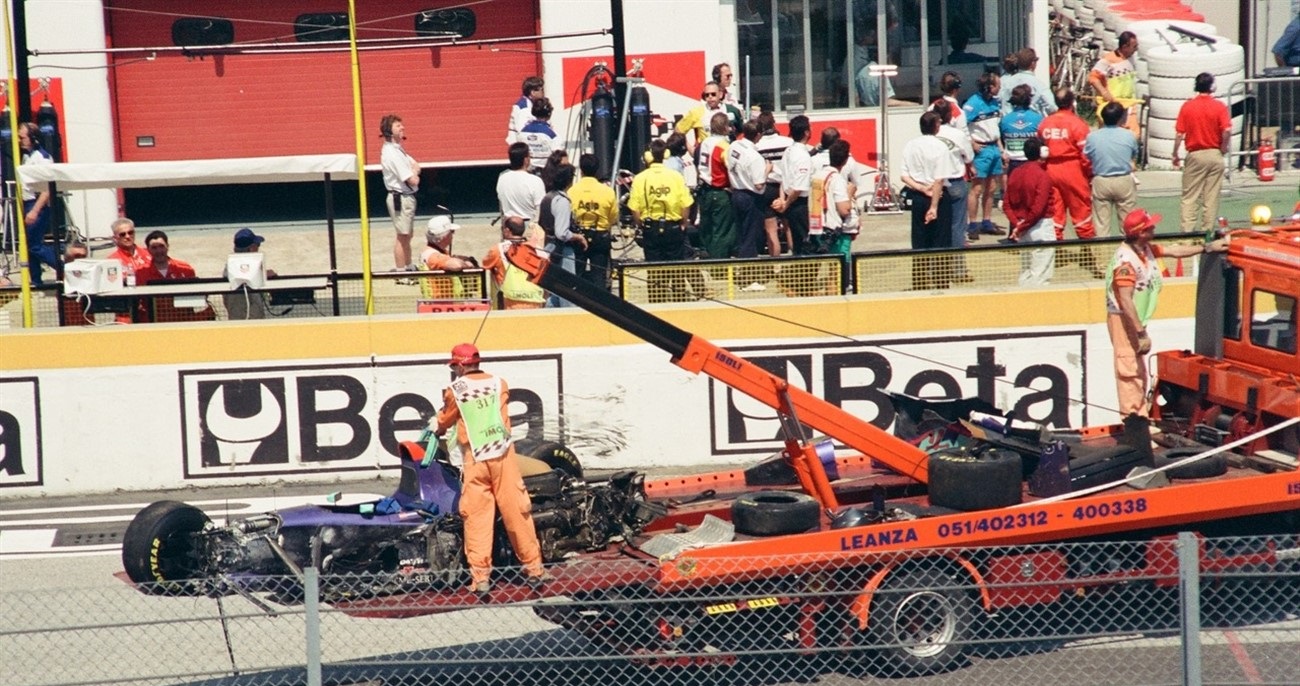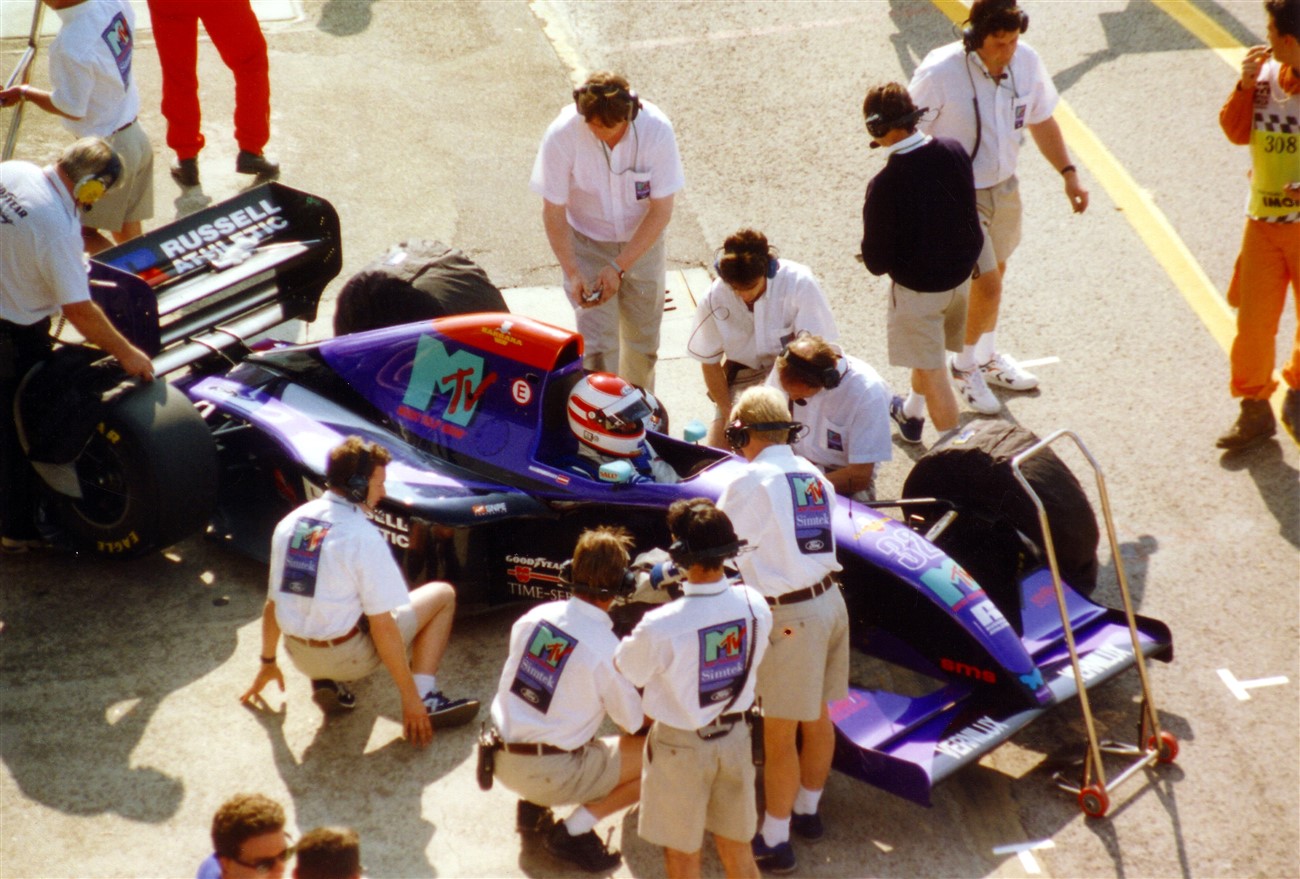Ibrar’s latest and last blog about the 1994 season in the Formula One. Many thanks for the amazing blog posts, the interesting and forgotten information you where able to re-discover. Enjoy the last blog from Ibrar! He will take a well deserved sabbatical the coming time.
Following the tragedies of the 1994 San Marino GP, a mass-media hysteria gathered and called for immediate repercussions but couldn’t agree on what they should be. Some suggestions were constructive, some destructive, most were frankly a veiled attempt to turn tragedy into titillation. Generally, the fewer journalists knew about F1, the greater the mock outrage was. FIA President Max Mosley was initially at pains to avoid a knee-jerk response…that was until Karl Wendlinger suffered an almost fatal crash at Monaco less than two weeks later. Mosley then came under intense pressure from outside the sport to impose urgent safety measures, but teams were in an uproar over the haste of such action. They argued Mosley’s measures would not be safer until the knock-on effects were established, this led to more problems which are detailed in the upcoming book.
Mosley felt it was a statistical cluster that so many accidents happened at Imola 1994. But choose his words carefully afterwards to avoid being branded as irresponsible by a media baying for blood. Meanwhile, the debate raged whether the banning of driver aids and active suspension played any part in the accidents. Reigning world champion Alain Prost stated “The cars are more difficult to drive (in 1994). They are traumatising on the physical side.” And it was Senna’s early experiences in the 1994 Williams which prompted him to claim “It’s going to be a season with lots of accidents…” Martin Brundle, who replaced Senna at McLaren, adds “Some of the cars still had aero optimised for all the goodies and suddenly all the goodies weren’t there, so you ended up with – in F1 terms – a slightly agricultural fix while you were getting the rest of it together. You certainly had less control of the car.”
Senna’s prophecy seemly came true as it was supported by the statistics. By the end of May 1994, F1 suffered nine serious accidents resulting two fatalities and five major injuries and two very lucky escapes. Compare that to 1993 and 1995 where there were five and three major accidents by June in those respective years. Fortunately, none of the accidents in 1993 and 1995 resulted in serious injuries or fatalities. Undoubtedly F1’s luck had run out during that dark period in 1994 and whilst the above statistics tell a story, one must remember accidents can happen at any time.
Likewise there was no direct connection between those nine accidents either, however, in the majority of cases drivers were pushing too hard in unfamiliar cars. The 1994 Williams was notoriously unpredictable to drive on the limit at the time. This stemmed from not appreciating how difficult it was converting their car back to passive suspension and remarrying the aerodynamics accordingly. Furthermore, Williams’ Paddy Lowe believes “traction control brought qualities to the car the driver didn’t really appreciate. Everybody had been running traction control for at least a year, if not two (by ’94), so going to a car that suddenly doesn’t have it is going to be quite a handful.

Damon Hill applied caution in his driving until he was more familiar with the 1994 spec cars whereas Senna, rightly or wrongly, took greater risks.
Nevertheless, Mosley’s view was; “The small teams did not have them last year and in 1991 virtually nobody had them. It is inconceivable that a driver of Senna’s skill would be inconvenienced by a lack of driver aids”. Furthermore, in Mosley’s autobiography, he highlighted most F1 drivers acquired their skills in cars not equipped with electronic aids. It would be foolish to lay the whole blame for the 1994 accidents solely on the banning of driver aids alone, as there were many other factors involved all of which is detailed extensively in the upcoming book. For instance, teams tried extreme car setups to try to retain their “knife edge” aerodynamics even though they now had passive suspensions.
Meanwhile, fuel companies no longer had to worry about fuel economy during races, due to the introduction of refuelling, so they started to brew extremely potent fuels which increased the power of the engines. Damon Hill adds “One thing that changed was the width of the tyres for 1993. The rears were narrowed (from 18 to 15 inches) and I don’t think that was terribly good. That carried through to 1994, so maybe with active suspension, the effect of that change was masked a little in 1993. “That meant there was less development on those tyres on passive suspension. When I first tested for Williams at Imola (in 1994) we had the much bigger rear tyre. It was very stable, lots of traction and great to drive. But when we went to the narrower rear tyre the car was a lot less comfortable.”
1994 – The Untold Story of a Tragic and Controversial F1 Season is a new book, which not only covers this topic in more detail but it explains how the driver aid ban was forced through, extremely late and against teams wishes. It is available from Performance Publishing’s website where you can also read a free sample of the book. Alternatively, sign up at; www.1994f1.com/contact to receive exclusive information on the follow-up book and have new blogs emailed to you.
Images courtesy; of Alan Dahl and Martin Lee via https://commons.wikimedia.org/wiki/Main_Page




